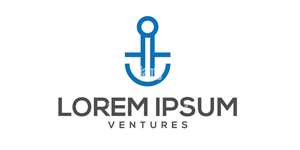By George Ballane
•
July 31, 2025
You're seeing your last patient of the day when your practice management system suddenly freezes. Then comes the message: "Your files have been encrypted. Pay $50,000 in Bitcoin within 72 hours or lose everything." Sound like a nightmare? For thousands of businesses and practices this nightmare has already become reality. It's not the only possible threat, though. What if one of your staff just transferred $500,000 to a fake account due to phishing. What if all your client data were made available for sale? What if that vendor you hired turns out to be a North Korean Spy? All of these have happened over the last couple of years. And since 94% of small and medium sized businesses have faced some sort of cyber attack, it could happen to you. The Uncomfortable Truth About Dermatology Practices as Cyber Targets Here's what cybercriminals see when they look at your dermatology practice: a goldmine of valuable data with surprisingly weak defenses. Your practice doesn't just store names and addresses. You have high-resolution patient photos, detailed medical histories, insurance information, before-and-after treatment images, and financial records. That data is worth serious money on the dark web – and cybercriminals know it. Most dermatologists assume they're too small to be targeted. That's exactly what makes you perfect prey. A recent GTIA study revealed that 94% of small and medium businesses have suffered cyber attacks. Medical practices face even higher risks because you handle more sensitive data than most businesses, yet you often lack the robust security infrastructure of larger organizations. The harsh reality? You're not flying under the radar. You're sitting in plain sight with a target painted on your back. The Devastating Reality: What Happens When You Get Hit When ransomware hits your practice, the chaos is immediate and overwhelming. Your systems go down. You can't access patient records. Appointments get cancelled. Your staff can't work, but you're still paying their salaries. The financial nightmare extends far beyond the ransom demand. According to GTIA research, the average cost of a cyber incident ranges from $254,455 to $7 million per incident. That includes system recovery, lost revenue, legal fees, regulatory fines, and reputation damage. But here's the statistic that should keep you awake at night: 60% of small and medium businesses close within 6 months of a major cyber security event. Why Most Dermatology Practices Are Sitting Ducks Only 40% of small and medium businesses have a strategic approach to cybersecurity. The rest are winging it with dangerous assumptions like "our EMR provider handles security" or "we have antivirus software, so we're protected." Your dermatology practice faces unique vulnerabilities that many other businesses don't have. You've got dermatoscopes, digital cameras, tablets, and multiple computers all connected to your network. Staff members access patient data from exam rooms, front desks, and sometimes remotely. You store large image files across multiple systems, creating numerous entry points for cybercriminals. Every connected device is a potential doorway for hackers. Every staff member who clicks on a suspicious email could accidentally invite ransomware into your network. Every outdated software program is a security weakness waiting to be exploited. The Smart Practice Owner's Cybersecurity Action Plan Note, this can be daunting - but it's easy to get help. Book a free IT Cure with BizTechPro and let the experts do the work. Immediate Steps (This Week) Your first priority is identifying what you're working with. Audit every device that connects to your network – computers, tablets, smartphones, medical equipment, even smart printers. You can't protect what you don't know exists. Implement multi-factor authentication on all systems immediately. Yes, it's slightly more inconvenient for daily logins, but it stops most automated attacks cold. Create offline backups of your critical patient data. If ransomware hits, offline backups are often your only path to recovery without paying criminals. Short-term Strategy (Next 30 Days) Schedule a comprehensive security assessment. You need to know exactly where your vulnerabilities are before cybercriminals find them first. Train your entire staff on phishing recognition. Most successful attacks start with an employee clicking on a malicious email or link. Your front desk coordinator could accidentally hand over your entire practice to hackers. Establish clear incident response procedures. When something goes wrong, every minute counts. Your staff should know exactly who to call and what steps to take. Long-term Protection (Ongoing) Cybersecurity isn't a one-time project – it's an ongoing process. You need regular security monitoring, software updates, and system maintenance. Schedule quarterly staff training refreshers because new threats emerge constantly. Consider annual penetration testing where security experts attempt to hack your systems in a controlled environment. It's better to find vulnerabilities during a test than during a real attack. Why DIY Cybersecurity Isn't Enough for Medical Practices HIPAA compliance requirements go far beyond basic antivirus software. You're legally required to protect patient health information with specific technical, physical, and administrative safeguards. A security breach doesn't just threaten your practice – it can result in massive federal fines. Medical networks are complex beasts. You've got EMR systems talking to practice management software, imaging equipment storing files on servers, and staff accessing data from multiple locations. Managing security across all these systems requires specialized expertise. You became a dermatologist to treat patients, not to become a cybersecurity expert. Do you really want to spend your evenings researching the latest ransomware variants instead of spending time with your family? The math is simple: professional IT security costs a fraction of what you'll lose in a major cyber incident. Prevention is always cheaper than recovery. Don't Become Another Statistic Here's the reality: You can either invest in professional cybersecurity now, or you can roll the dice with your practice's future. With 60% of practices closing after a major cyber incident, the choice is clear. The question isn't whether you can afford professional IT security – it's whether you can afford to operate without it. Your patients trust you with their most sensitive medical information. Your staff depends on you for their livelihood. Your family depends on the income from your practice. Cybercriminals are counting on you to keep assuming you're too small to be targeted. They're betting you'll keep putting off security improvements until next month, next quarter, or next year. Don't give them that satisfaction. Take Action Today Don't become another statistic. Schedule a security review - BizTechPro offers a free IT Cure. Book it now to make sure you don't become the next victim of a cyberattack








